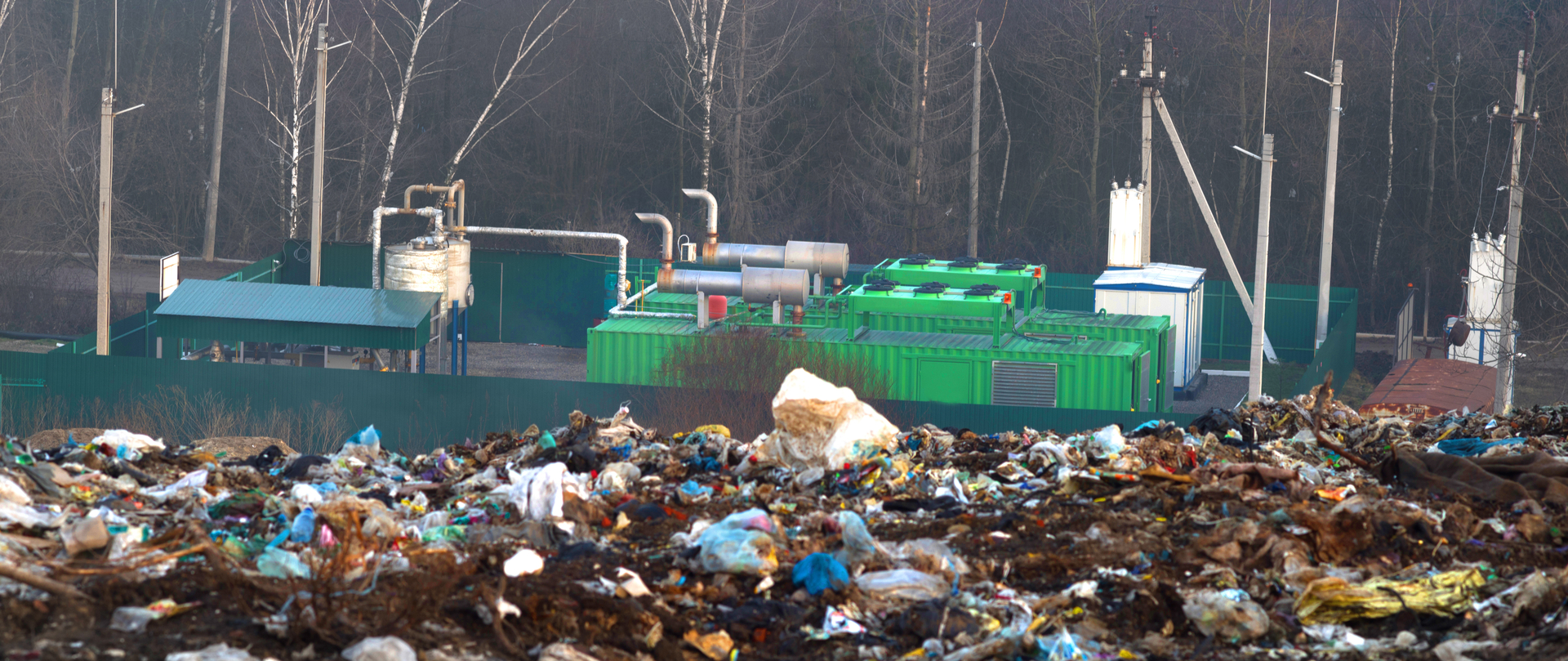- Products
- Markets & Applications
- Service & Support
- About
- News & Events
- Find a Distributor
- Contact Us
- language Select Region
When organic waste in a landfill starts to break down, landfill gas is created. Over the course of several years, this process can become stable enough that the gas can be captured and used to fuel generators and produce energy.
By generating CO2 and CH4, the breakdown of organic waste within landfills contributes to the escalating climate issue. In addition to this, our reliance on fossil fuels is reduced and the effects of climate change are lessened by converting these emissions into a fuel source.
Monitoring landfill gas is necessary because it can give crucial early warnings of the underground migration of gas from landfills, which may mean that control methods have failed. This is dangerous because landfill gas, or methane, is poisonous and more hazardous to the environment than carbon dioxide. Monitoring landfill gas allows for the earlier detection and remediation of any control measure failure signs.

The first stage involves a desk study, which is done to map out the key features of the cap, and a walkover survey is done to determine where methane emissions are greatest. During the walkover, a sensitive hand-held gas detector, such as the SEM5000, is used to scan the air and find substantial methane concentrations.
The walkover survey must be thorough and provide a semi-quantitative ranking of the methane emissions from various parameters. The defects in the gas management system should then be corrected, and a fresh inspection of the cap should be performed to identify any additional problems that need to be resolved.
After a systematic walkover survey, you will be able to detect whether the methane concentration is less than 100 parts per million by volume (ppmv) directly above the surface on the main zones of the cap and less than 1,000 ppmv close to any discrete feature.
Within a year following capping, the landfill surface should be ready for a quantitative flux box survey. If temporary capped areas have been in place or are supposed to be there for more than a year, they must also be monitored. The capped areas are divided into zones, each of which may contain a different feature, based on the results of the walkover study.
A feature is a more discrete, smaller location or installation from which methane emissions are higher than in the adjacent or surrounding zone. A zone is an expansive section of landfill cap that is typically consistent and homogeneous.
Flux measurements are typically subject to the following restrictions: carefully chosen geometric patterns are regularly applied, and visually noticeable emission aspects are evaluated separately so that corrective measures can be aimed at them.
Measurements should not be taken right after a prolonged period of heavy rain or near-standing water. During this, the barometric pressure shouldn’t be rising quickly and should not be significantly higher or lower than the average for that region.
By acting on buried organic waste, microorganisms continuously produce landfill gas. Modern, engineered landfills with active landfill gas collection systems have a lower percentage of raw gas that can escape into the environment.
A significant portion of landfill gas is methane, which is a greenhouse gas with an influence on the entire planet. The overall amount of methane emissions to the atmosphere must be minimised via the gas management systems at a landfill site.
Routine inspections are required to prove active gas management at landfills is reducing the release of untreated gas by meeting the methane emission standard through the surface of the landfill cap.
This includes:
The composition of landfill gas (LFG) is crucial. The most abundant component in LFG is methane, which typically makes up 50% to 60% of the gas. To verify the calorific conditions in the natural breakdown of organic waste in a landfill site operators analyze their gas for oxygen content, this ensures the balancing of the gas wells/manifolds produce maximum levels of methane to increase energy production. It is also important to monitor for levels of gases harmful to the plant equipment such as hydrogen sulfide.
Increased Return on Investment, Protection of expensive plant equipment (CHP’s) and Validation and optimization of the landfill gas collection system
Operators opt for fixed in line systems that will measure multiple sample point to ensure the process verification is monitored. These systems connect via industry standard protocols to the operators control systems housed on site. Portable analyzers offer flexibility for process monitoring at various wells/manifolds in the process to ensure maximum efficiency of the collection system.
The composition of landfill gas (LFG) is crucial. The most abundant component in LFG is methane, which typically makes up 50% to 60% of the gas. To verify the calorific conditions in the natural breakdown of organic waste in a landfill site operators analyze their gas for oxygen content, this ensures the balancing of the gas wells/manifolds produce maximum levels of methane to increase energy production. It is also important to monitor for levels of gases harmful to the plant equipment such as hydrogen sulfide.
Increased Return on Investment, Protection of expensive plant equipment (CHP’s) and Validation and optimization of the landfill gas collection system
Operators opt for fixed in line systems that will measure multiple sample point to ensure the process verification is monitored. These systems connect via industry standard protocols to the operators control systems housed on site. Portable analyzers offer flexibility for process monitoring at various wells/manifolds in the process to ensure maximum efficiency of the collection system.